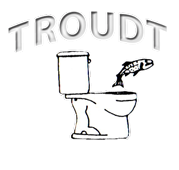How Toilets Work
It surprised even us, a Greeley plumbing company, to learn that the first flushing toilet was invented back in 1596 in England by Sir John Harrington, for his godmother, Queen Elizabeth I.
He called it a water closet, and it had a seat, a bowl, and a water cistern behind the seat that could be used to wash away waste.
It took nearly another 200 years before Scottish inventor Alexander Cummings thought to add a water tap that allowed some water to remain in the bowl, which aided cleaning and reduced the swampy  odor of the water.
odor of the water.
By 1840, rich homes and luxury hotels had begun to be outfitted with indoor plumbing. And in 1891, the unforgettably-named Thomas Crapper updated the modern toilet with his valve and siphon design.
What we think of as the modern toilet came into being in the early 1900s, and there have been ongoing minor changes ever since.
But How Does A Toilet Actually Work?
Toilets are actually a pretty clever water handling system, as any plumbers in Greeley, CO can tell you.
Take the lid off the tank, and you'll find the bowl siphon, the flush mechanism, and the refill mechanism. It looks so simple, but just remember how long it took civilization to figure it out!
Now, the bowl itself, without the tank, is still usable. Molded into bowl is the bowl siphon, which drains away excess water. Water added a cup at a time will just run down the siphon, and the water level remains stable. But a large amount of water (say a 2 gallon bucket) emptied into the bowl all at once fills the siphon tube, and causes the bowl to empty down into the sewer pipe.
This is why you can use a toilet even without water directly piped into your bathroom...all you need is the big, full bucket, dumped in all at once.
The Mechanisms in the Tank
The tank replaces the bucket we talked about. Since you need to get a large amount of water quickly into the bowl to activate the siphon, the water in the tank does the trick. The flush handle is attached to a short chain, which is in turn attached to the flush valve.
When the chain pulls the flush valve up, the water rushes from the tank to the bowl and voila! flushes.
And while water enters the rim of the bowl, and some of it drains out through holes in the rim, much of it flows down into the larger hole at the bottom--the siphon jet.
Once the tank is empty and the bowl flushed, the flush valve refits itself back over the drain hole, and the tank can refill. A filler float (the ball float) drops slowly as the water level in the tank drops. Water begins to flow again, some into the tank and some into the bowl. When the tank's water level rises, the float rises too, and at some point turns the flow valve off.
A conveniently placed overflow tube is also in the tank, so if for some reason the filler valve sticks and the water keeps running, the extra water just keeps draining into the bowl. (And that is when you want to call the plumber for a fix!)
It's really a simple and elegant system...when it works. And when it doesn't, a plumber can easily repair it for you.
